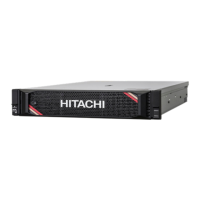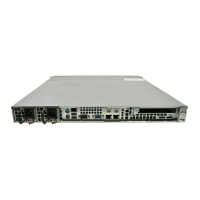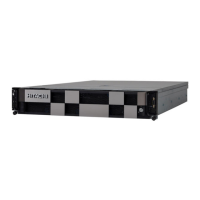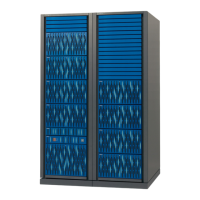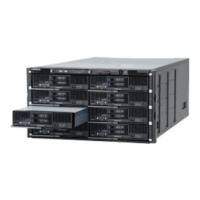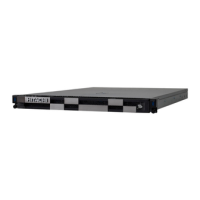Configuring the hardware and installing an operating system
All data is lost if a second drive fails in the same parity group before data from the first failed drive has finished rebuilding. A
greater percentage of array capacity is used to store redundant or parity data than with non-nested RAID methods (RAID 5,
for example). A minimum of six drives is required.
This method has the following benefits:
•
Higher performance than for RAID 5, especially during writes.
•
Better fault tolerance than either RAID 0 or RAID 5.
•
Up to n physical drives can fail (where n is the number of parity groups) without loss of data, as long as the failed
drives are in different parity groups.
RAID 6
RAID 6 protects data using double parity. With RAID 6, two different sets of parity data are used (denoted by Px,y and Qx,y
in the figure), allowing data to still be preserved if two drives fail. Each set of parity data uses a capacity equivalent to that
of one of the constituent drives. The usable capacity is C x (n - 2) where C is the drive capacity with n drives in the array.
A minimum of 4 drives is required.
This method is most useful when data loss is unacceptable, but cost is also an important factor. The probability that data
loss will occur when an array is configured with RAID 6 (Advanced Data Guarding (ADG)) is less than it would be if it were
configured with RAID 5.
This method has the following benefits:
•
It is useful when data protection and usable capacity are more important than write performance.
•
It allows any two drives to fail without loss of data.
RAID 60
RAID 60 is a nested RAID method in which the constituent drives are organized into several identical RAID 6 logical drive
sets (parity groups). The smallest possible RAID 60 configuration has eight drives organized into two parity groups of four
drives each.
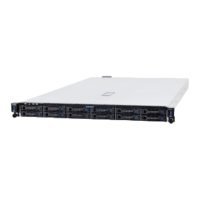
